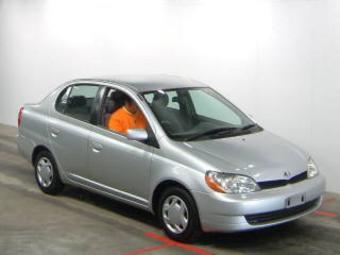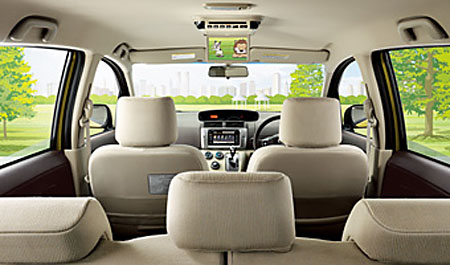
Widely considered the quintessential roadster-style sports car, the S2000 is the performance icon for the Honda brand and combines uncompromising racetrack-ready performance with everyday usability.
Introduced in 1999, the S2000 rewards driving enthusiasts with a potent 237 horsepower, 2.2-liter, 16-valve DOHC VTEC 4-cylinder engine and a precise, short throw 6-speed manual transmission, along with tenacious handling and a perfect 50/50 weight balance. Continuing with significant improvements made to the 2006 model, the 2007 Honda S2000 includes an electronic Drive-by-Wire (DBW) Throttle System, Vehicle Stability Assist (VSA), Maintenance Minder system, standard headrest speakers, an outside temperature gauge and an engine start button.
"The Honda S2000 is a true performance vehicle that provides customers with an exciting experience behind the wheel," said John Mendel, senior vice president of American Honda Motor Co., Inc. "Since the S2000 is a car designed by enthusiasts for enthusiasts, it can easily satisfy daily driving needs without sacrificing track-worthy performance."
The S2000's renowned high-revving, 2.2-liter, 16-valve DOHC VTEC 4-cylinder engine remains the pinnacle of naturally aspirated performance technology, delivering 237 horsepower at 7,800 rpm and 162 lb-ft of torque at 6,800 rpm. Perfectly complimenting the engine's output characteristics is a compact, longitudinally-mounted, close-ratio 6-speed manual transmission that features a direct linkage for precise shifting and quick throws.
The S2000 comes equipped with a Drive-by-Wire throttle control system eliminating the need for a mechanical connection between the throttle pedal and the engine. This enables continuous electronic monitoring and adjustment of throttle pedal sensitivity to create an ideal match between throttle response and driving conditions. The system also manages the S2000's cruise control function for greater precision.
Honda's VSA system makes the S2000 more stable and forgiving during street driving or in inclement weather conditions. Working in concert with the Drive-by-Wire system, VSA continuously monitors yaw rate, steering input, throttle input, and braking pressure to determine if the car is following the driver's intended path, and can independently coordinate each of the disk brakes through the 4-channel anti-lock brake system, along with the throttle, to enhance vehicle stability. While this serves to effectively enhance driver control during acceleration, braking, and cornering, the system can be disabled with the touch of a button when conditions warrant it. To help provide optimum stopping power, the braking system also features Electronic Brake Distribution (EBD) and Brake Assist.
The S2000's rear-wheel-drive chassis and powertrain layout results in a 50/50 front/rear weight distribution for perfect balance when cornering, while its hybrid monocoque body and "high X-bone frame" results in exceptional structural rigidity. Combined with a front and rear double wishbone suspension, precise electric power steering, and a torque-sensing limited slip differential, the end result is a complete, no compromise, performance package for the enthusiast driver.
Standard features for the S2000 include a power retractable convertible top, 17-inch aluminum alloy wheels, leather trimmed seats and High Intensity Discharge (HID) headlamps with daytime running lights. An aluminum hardtop and XM Satellite Radio are available as dealer installed options.
For 2007, the S2000 is available in six colors, including, Laguna Blue Pearl, Silverstone Metallic, New Formula Red, Rio Yellow Pearl, Berlina Black and Grand Prix White.





























 Tougher emissions regulations signal the end of the road for production of Toyota's rapid Corolla T Sport model, but its hot hatch reputation is being kept alight with the introduction of a Corolla that's faster, more powerful and has better handling and more street presence than ever before.
Tougher emissions regulations signal the end of the road for production of Toyota's rapid Corolla T Sport model, but its hot hatch reputation is being kept alight with the introduction of a Corolla that's faster, more powerful and has better handling and more street presence than ever before.
















 The Toyota FT-HS hybrid sports concept will make its debut at the 2007 North American International Auto Show.
The Toyota FT-HS hybrid sports concept will make its debut at the 2007 North American International Auto Show.







